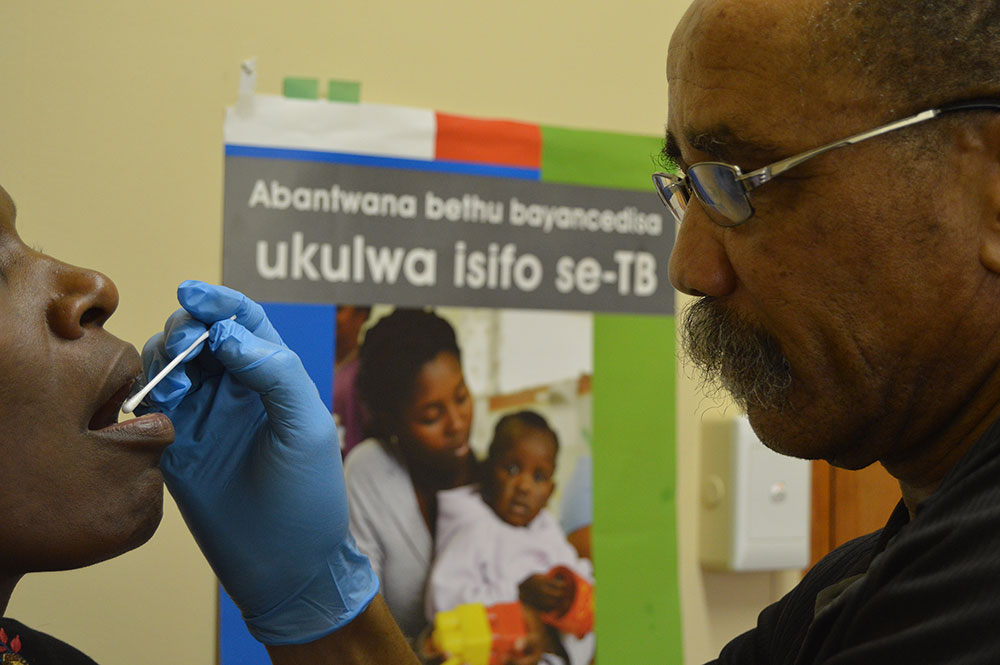New diagnostic approach using oral swab for early detection of TB

Researchers from the South African Tuberculosis Vaccine Initiative (SATVI) and the University of Washington have announced the findings of a “Proof of Principle” study proving that it is possible to detect the presence of the Mycobacterium tuberculosis by collecting an oral swab in TB patients and analysing them by quantitative polymerase chain reaction (PCR).

In the nearby future a simple oral swab could reveal whether a person has been exposed to the Mycobacterium tuberculosis (bacteria causing Tuberculosis), improving the prospects of the early detection of TB exposure.
Problem of undetected TB
Undetected TB is a big problem in South African because by the time patients arrive at health facilities, many patients already have persistent coughs, suffer from severe anemia, are unable to work or go to school and they will also have contributed to the spread of TB in their communities. According to Professor Gerard Cangelosi, from the University of Washington, currently health practitioners test for the presence of TB in “sputum” which is problematic, because it is difficult to dislodge bacteria from the mucus milieu, increasing the risk of infection in health workers collecting the sputum.
New test
According to Dr Angelique Luabeya, SATVI Principal Investigator, “this novel approach could meet a vital need in global health by serving as an easy, real-time, population-based endpoint in trials to develop new TB control strategies“. In this study, the health worker would collect oral swab samples from a newly diagnosed TB patient using a special swab which is then analysed by PCR to detect M.tuberculosis in DNA.
Using an oral swab sample has given better results than previous efforts to test for TB in materials other than sputum, such as blood, urine or exhaled breath which had detection rates typically below 50%. In this study, 60 oral swabs were collected from 20 TB patients at SATVI in Worcester (South Africa) and 20 healthy controls in Seattle, Washington (USA). 44/60 (73%) of TB case oral swabs were positive for M. tuberculosis DNA by quantitative PCR (qPCR) analysis. In total, 18 of the 20 Xpert confirmed TB case subjects yielded at least 2 positive swabs (90% case sensitivity). In Seattle, 100% (60/60) oral swabs from healthy control were negative for M. tuberculosis DNA. As opposed to the certification requirements to safely obtain blood or urine samples, this oral swab collection requires minimal training opening up perspective to TB exposure testing becoming more widespread.”
Early Detection of TB
“Care and control of the disease TB really requires prompt case-finding,” said Gerard Cangelosi, University of Washington Professor of Environmental and Occupational Health Sciences and Global Health. Detecting the disease with a simple oral swab “could be a game changer for TB control because it could make diagnosis cheaper and easier,” he said.
Cangelosi is corresponding author on a paper detailing this acquisition method, in collaboration with Dr Luabeya and other researchers at the South African Tuberculosis Vaccine Initiative and the University of Cape Town, South Africa.
Cangelosi stressed that the study is merely a proof of principle, limited by its small size. Efforts are under way to expand this initial study into a large-scale controlled trial. Yet the preliminary success offers hope for greatly improved TB detection and control, especially in nations with limited public health resources.